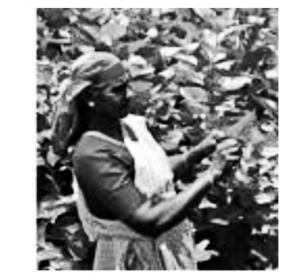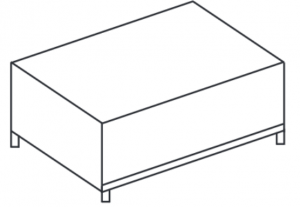Harvesting of Mulberry
Introduction
- It is possible to harvest leaves 5-6 times a year. Generally, the leaf yield is more in the first three harvests during the rainy season and comparatively less during winter and summer.
- By adopting scientific recommendations regarding the initial establishment and yearly management of the mulberry garden, it is possible to harvest about 10,000 metric tonnes of leaves from the rainfed garden and 30,000 to 35,000 metric tonnes from irrigated mulberry garden per hectare per year.
- It is important that the leaves should be harvested at the correct stage of maturity to suit the stage of worms; otherwise, the quality of the cocoon will be poor.
- The harvesting method or collecting method of mulberry leaves can be broadly classified into three types:
- Branch or Shoot Cutting Method.
- Leaf Plucking Method.
- Bud Plucking Method.
1. Branch Cutting Method: In this method, the branches are cut close to the base. One of the types of this method is collecting all the branches before budding in spring. The new shoots formed in these are utilized. In another method, the collection is made during the rearing of mature silkworms in spring. In recent times, the practice of rearing on mulberry shoots throughout the year is becoming more and more popular.
2. Leaf Plucking Method: In this method, only the leaves are plucked from the stems and the branches. There are various types of plucking the leaves. For example, the leaves are plucked leaving behind a part of the leaf blade. In another method, the leaves are plucked close to the center of the stipule either by finger or using leaf plucker. In the third method, leaves are plucked by hand at random. Since a large number of leaves are required for rearing grown-up silkworms, the third method is often adopted.
3. Bud Plucking Method: In this method, all the buds, that is, young leaves are plucked from the shoots and this method is adopted for rearing young silkworms in summer and autumn. Branch cutting and shoot harvest method saves labor in picking leaves and distribution; bed changing and cleaning. It also minimizes the number of trays and shelves. The silkworms are fed on the floor itself placing them on cardboard or even paper. However, a large rearing space is required in this case. The leaves remain fresh for long as they are on branches.

Advantages of Shoot Harvest Method:
1. The leaves remain fresh on branches.
2. The labor is reduced to the extent of 50%.
3. For every kg of cocoon producing there is a saving of 2-3 kg of mulberry leaves.
4. Production of better quality and quantity cocoons is ensured.
5. Production of more organic manure.
6. Since, the worms are not often touched by hand and the excreta of the worms are collected at the bottom, there will be a reduction in diseases.
7. There is no scope for bed changing and cleaning.
8. And there is good scope for better aeration and light in the rearing house.
Disadvantages:
- Initial expenditure is high for the sericultures.
- For silkworms rearing, 30% or more space is required.
- Every time the silkworms are reared, there will be pruning. Hence, material for replanting will not be available.
- According to some experts when the disease occurs, it will be difficult to remove the diseased worms.
Time of Leaf Harvest:
- Leaves harvested in the afternoon contain comparatively less moisture and wither rapidly as compared to leaves harvested in the early morning because of the fact that the process of photosynthesis and transpiration are active during the daytime.
- Therefore, early morning is the most suitable time for leaf harvesting.
Preservation of Leaves:
- Fresh leaves are more palatable and nutritious for silkworms. Therefore, leaves for young worms should be kept in baskets lined and covered with a wet cloth.
- If the leaves of good quality are to be fed to the grown-up worms, they should be stored in a wooden frame container measuring about 1.5 m x 3.0m x 0.8 m size, lined and covered with wet gunny cloth.
- The leaves should be kept loosely and turned for aeration to prevent the rise of temperature within the heap of leaves. The cut shoots should be kept in an erect position with the cut ends upwards and covered by wet gunny cloth.
- There are ways to arrest the deterioration changes in the stored leaves, as their long storage results in lowering the qualitative values.
- The ideal condition to preserve the leaves is at a temperature below 20°C with 90% relative humidity.
- Therefore, heaping up of leaves must be avoided as it leads to fermentation and the consequent degradation of chemicals within resulting in the reduction of nutritional value and palatability.

References: